History
The Origins of Metal Nanostructuring

The origins and current status of industrial scale metal nanostructuring
The special properties of ultrafine grain metals were first discovered by scientists in Russia and published in technical journals in the late 1980’s. The first overviews of the great promise of the technology appeared first in the international scientific literature in 1991 and 1993. In 1994, through research sponsored by the U.S. Department of Energy (U.S. DOE) and conducted jointly by scientists at Los Alamos National Laboratory, the Institute for Physics of Advanced Materials, and other institutes in Russia, the technology was developed deliberately for making super strong titanium for medical applications. Over $16 million of support from the US Department of Energy (DOE) Global Initiatives for Proliferation Prevention program and DOE’s commercial liaison, the United States Industry Coalition, provided the financial backing and business resources to successfully develop the nanostructuring technology. Research done within the U.S. DOE sponsored program demonstrated the unparalleled mechanical properties of ultrafine grain titanium imparted by nanostructuring.
The first medical devices from ultrafine grain titanium were fabricated for clinical trials in 1998, and produced remarkably positive results. The promise of a superior new medical material prompted in depth evaluation of how the unique nanometer scale features of ultrafine grain titanium interact with bone. Studies of nanostructured titanium and its special nanoscale structure were begun in 2003 at Purdue University and Brown University, and subsequently replicated at research institutions worldwide, each consistently validating the positive result that bone cells more rapidly attach to and more readily adhere to ultrafine grain titanium than conventional titanium. The most impressive results on cell growth (see the figure below) have shown 20 times greater cell proliferation on ultrafine grained titanium as compared to conventional titanium.
By 2004 the U.S.-Russian research team had developed and patented an economical method to produce ultrafine grain titanium. Clinical trials of nanotitanium dental implants begun in Central Europe in 2006. The success of the trials has grown, now with over 4000 patients evaluated. Clinical evaluations of nanostructured titanium dental implants have also been conducted in the USA, Canada, China, and Russia. Surgical success rates in these studies were particularly high, between 98% and 100%. Because of the enhanced strength of nanostructured titanium, it was also possible to design and manufacture smaller diameter implants, which are particularly well suited for replacing lower front teeth. In the medical trials in North America, the time for bone integration and healing was reduced by factor of 3, with full tooth restoration and loading within one month.
Looking ahead to a next generation of prosthetics
The launch of nanostructured metals in dental implants has been a starting point for expanding their use to a much broader range of prosthetics. The benefits of higher strength and more rapid bio-integration can enhance the performance of virtually any orthopedic device. As full scale production of nanostructured metals comes online, metal product forms for fabricating hip, spine, and most trauma appliances will be available.
The robust availability of nanostructured metals in all the product shapes and forms that prosthetic manufacturers use today will enable a new generation of medical devices to be introduced that are lighter, more compact, stronger, longer lasting, and intrinsically biocompatible.
Manhattan Scientifics is currently working with several medical device manufacturers to implement nanostructured alloys in several medical device applications.
Looking ahead to other product and market opportunities
Since virtually every metal and alloy can be nanostructured, the applications for enhancing the performance of conventional metals are endless. Applications of nanostructuring to aluminum, copper, magnesium, and steels are being developed already. The benefits of higher strength, higher electrical conductivity, superior sound dampening, higher fracture resistance, higher corrosion resistance, easier formability, and easier machinability can impact products for energy, transportation, sports, electronics, construction, and heavy industry.
Manhattan Scientifics welcomes the opportunity to write history with new partners, working with companies worldwide to make nanostructured metals available in more product shapes and forms.
